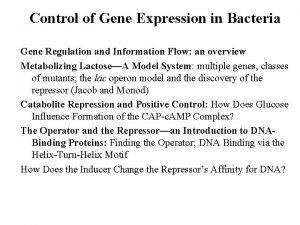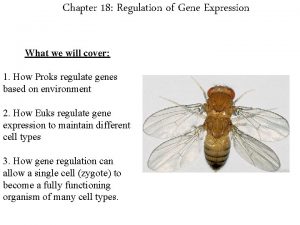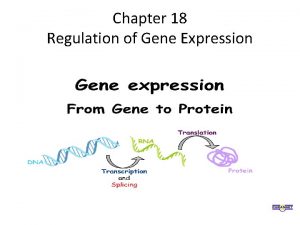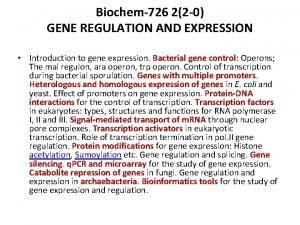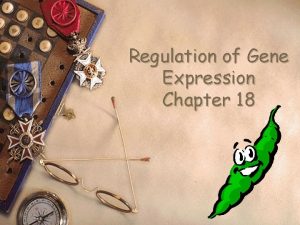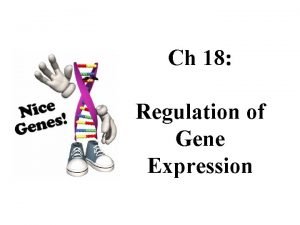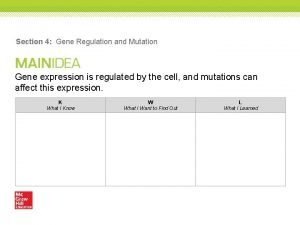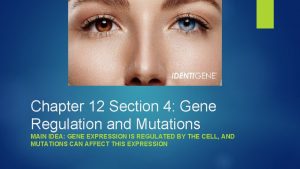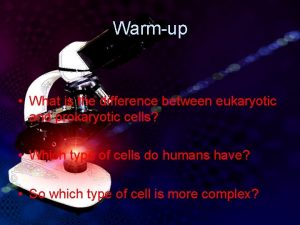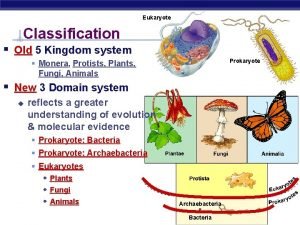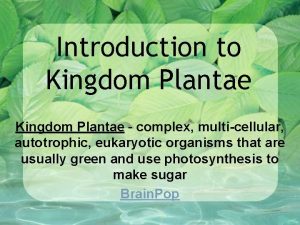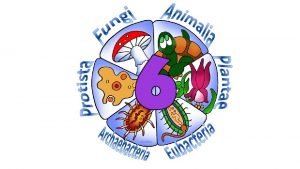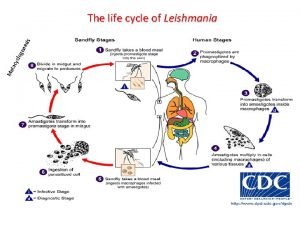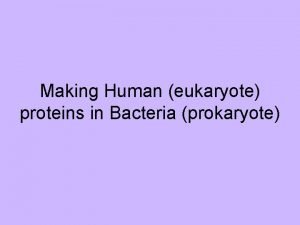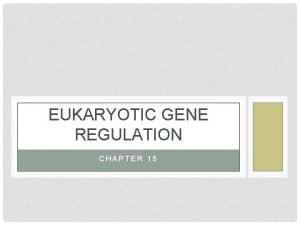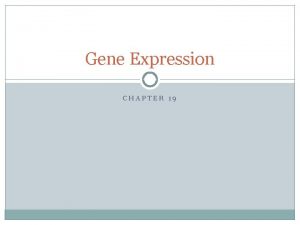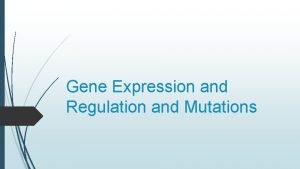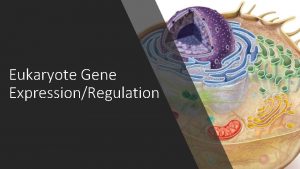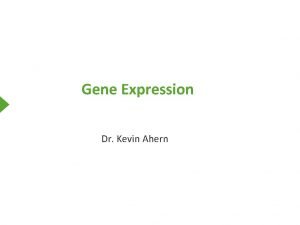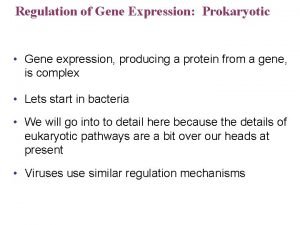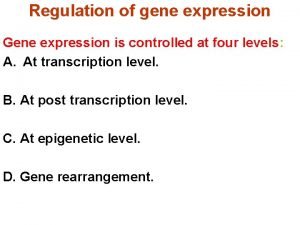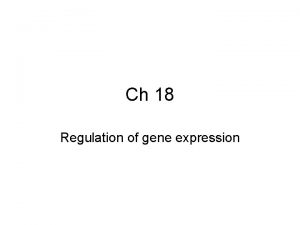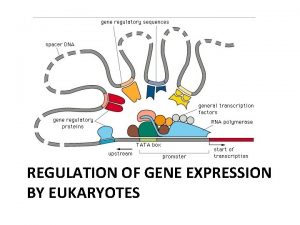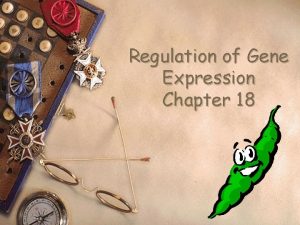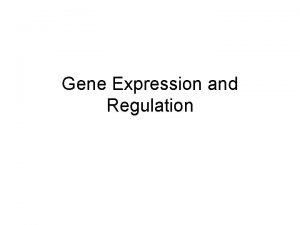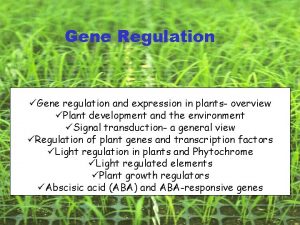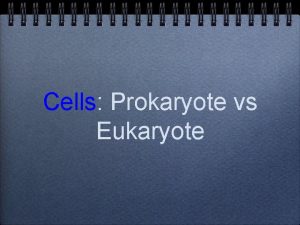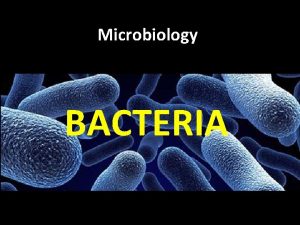Eukaryote Regulation and Gene Expression Eukaryotic Gene Regulation

















- Slides: 17

Eukaryote Regulation and Gene Expression

Eukaryotic Gene Regulation • How are genes turned on & off in eukaryotes? • How do cells with the same genes differentiate to perform completely different, specialized functions?

Evolution of gene regulation

Evolution of Eukaryotic regulation

Points of control

Cellular Differentiation

DNA packing

DNA Methylation

Histone acetylation

2. Transcription initiation • Control regions on DNA – promoter • nearby control sequence on DNA • binding of RNA polymerase & transcription factors • “base” rate of transcription – enhancer • distant control sequences on DNA • binding of activator proteins • “enhanced” rate (high level) • of transcription

Transcription Factors

3. Post-transcriptional control • Alternative RNA splicing – variable processing of exons creates a family of proteins

4. Regulation of m. RNA degradation • Life span of m. RNA determines amount of protein synthesis – m. RNA can last from hours to weeks

5. Control of translation • Block initiation of translation stage – regulatory proteins attach to 5' end of m. RNA • prevent attachment of ribosomal subunits & initiator t. RNA • block translation of m. RNA to protein

6 -7. Protein processing & degradation • Protein processing – folding, cleaving, adding sugar groups, targeting for transport • Protein degradation – ubiquitin tagging – proteasome degradation

Ubiquitin • Death tag” – mark unwanted proteins with a label – 76 amino acid polypeptide, ubiquitin – labeled proteins are broken down rapidly in "waste disposers" • proteasomes

Proteasome • Protein-degrading “machine” – cell’s waste disposer – breaks down any proteins into 7 -9 amino acid fragments • cellular recycling
 Regulation of gene expression in bacteria
Regulation of gene expression in bacteria Chapter 18 regulation of gene expression
Chapter 18 regulation of gene expression Chapter 18 regulation of gene expression
Chapter 18 regulation of gene expression Regulation of gene expression
Regulation of gene expression Chapter 18 regulation of gene expression
Chapter 18 regulation of gene expression Chapter 18
Chapter 18 Protein power point
Protein power point Section 4 gene regulation and mutations
Section 4 gene regulation and mutations Section 4 gene regulation and mutations
Section 4 gene regulation and mutations Eukaryote
Eukaryote Monera vs prokaryotes
Monera vs prokaryotes Is protist a prokaryote or eukaryote
Is protist a prokaryote or eukaryote Prokaryotic vs eukaryotic cells
Prokaryotic vs eukaryotic cells What time did you arrive in class today
What time did you arrive in class today Multicellular eukaryotic autotrophic organisms
Multicellular eukaryotic autotrophic organisms Eukaryotic unicellular or multicellular
Eukaryotic unicellular or multicellular Coding.oge
Coding.oge Eukaryote
Eukaryote
